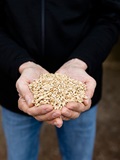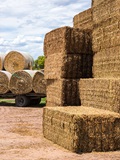Atherton Tableland
20 May 2020
| Date | AT 23 | AT 22 | AT 5YA |
|---|---|---|---|
| 06-Jan-23 | 350 | 290 | 330 |
| 13-Jan-23 | 350 | 290 | 330 |
| 20-Jan-23 | 350 | 290 | 330 |
| 27-Jan-23 | 350 | 290 | 330 |
| 03-Feb-23 | 350 | 290 | 330 |
| 10-Feb-23 | 350 | 290 | 330 |
| 17-Feb-23 | 350 | 290 | 321 |
| 24-Feb-23 | 350 | 290 | 311 |
| 03-Mar-23 | 350 | 290 | 311 |
| 10-Mar-23 | 350 | 290 | 311 |
| 17-Mar-23 | 350 | 350 | 323 |
| 24-Mar-23 | 350 | 350 | 323 |
| 31-Mar-23 | 350 | 350 | 323 |
| 07-Apr-23 | 350 | 350 | 318 |
| 14-Apr-23 | 350 | 350 | 313 |
| 21-Apr-23 | 350 | 350 | 309 |
| 28-Apr-23 | 350 | 350 | 309 |
| 05-May-23 | 350 | 350 | 309 |
| 12-May-23 | 350 | 350 | 309 |
| 19-May-23 | 350 | 350 | 309 |
| 26-May-23 | 350 | 350 | 309 |
| 02-Jun-23 | 350 | 350 | 309 |
| 09-Jun-23 | 350 | 350 | 309 |
| 16-Jun-23 | 350 | 350 | 313 |
| 23-Jun-23 | 350 | 350 | 316 |
| 30-Jun-23 | 350 | 350 | 316 |
| 07-Jul-23 | 350 | 350 | 316 |
| 14-Jul-23 | 350 | 350 | 316 |
| 21-Jul-23 | 350 | 350 | 316 |
| 28-Jul-23 | 350 | 350 | 323 |
| 04-Aug-23 | 350 | 350 | 330 |
| 11-Aug-23 | 350 | 350 | 330 |
| 18-Aug-23 | 375 | 350 | 330 |
| 25-Aug-23 | 400 | 350 | 331 |
| 01-Sep-23 | 400 | 350 | 333 |
| 08-Sep-23 | 350 | 337 | |
| 15-Sep-23 | 350 | 337 | |
| 22-Sep-23 | 350 | 339 | |
| 29-Sep-23 | 350 | 339 | |
| 06-Oct-23 | 350 | 334 | |
| 13-Oct-23 | 350 | 346 | |
| 20-Oct-23 | 350 | 346 | |
| 27-Oct-23 | 350 | 346 | |
| 03-Nov-23 | 350 | 346 | |
| 10-Nov-23 | 350 | 343 | |
| 17-Nov-23 | 350 | 345 | |
| 24-Nov-23 | 350 | 345 | |
| 01-Dec-23 | 350 | 345 | |
| 08-Dec-23 | 350 | 345 | |
| 15-Dec-23 | 350 | 345 | |
| 22-Dec-23 | 350 | 345 | |
| 29-Dec-23 | 350 | 345 |
Notes:
Change in price is the change since the last report. Hay quoted is sourced and delivered locally, GST exclusive unless stated otherwise. It should be noted that local prices quoted may not be the cheapest available, sourcing it from another region may be more affordable, and buyers are encouraged to evaluate all options. Prices are indicative to a mid-range shedded product, and based on the best indication of market value at the time of reporting. It should be noted there is a wide variation in quality of hay, prices for a mid-range product will not reflect the weighted average of trade. Prices will naturally vary based on the product quantity and quality, buyer/seller relationship and the size of the trade.The hay report has been commissioned by Dairy Australia to provide an independent and timely assessment of hay markets in each dairy region. This report is created using data provided by the Australian Fodder Industry Association (AFIA). It should be remembered that actual prices may vary for quality or other reasons. Whilst all reasonable steps have been taken to ensure the accuracy of the information contained in this report, Dairy Australia disclaims all liability to the fullest extent permitted by Australian law for any inadvertent errors and for any losses or damages stemming from reliance upon its content. Dairy Australia recommends all persons seek independent advice and, where appropriate, advice from a qualified advisor before making any decisions about changes to business strategy.
Commentary
- Warm and sunny across the region this week, with light falls of between 5mm and 10mm of rain on some days, but mostly clear and dry.
- Pastures remain green in the region, with good subsoil moisture and recent clear sunny days keeping the grass moving along.
- Hay cutting is moving along well in the region, with the string of warm sunny days providing excellent cutting and curing opportunities. Growers and contractors have been running non-stop to harvest during this period, and with the mostly good weather forecast this is expected to continue for the next few weeks.
- Sugar cane harvest is also underway in the region, with an increase of trucks on the roads causing some limited delays for other contractors.
- There are reports that hay sheds aren’t being filled at the start of this season, with demand from both local and interstate producers turning around bales very quickly, with some growers selling first cuts direct from the paddock.
- Input costs continue to be a factor for growers in the region, and while diesel has stabilised at $2.19 per litre, there is no indication of a reduction in price any time soon. The availability of urea has also started to tighten, with prices continuing to rise to match the perceived lack of supply onshore. Prices are averaging around $900 p/t with blended at over $1000p/t.
- No change to pricing this week. Enquiries have continued to increase with the hay being cut and baled. Reports of growers fielding calls from further afield than usual with much of the new hay going to the Darling Downs and into Northern NSW and even as far as Bega due to the dry conditions.
- Pasture (Rhodes Grass) hay: +/-0 ($350 to $450/t). Prices remain steady this week.
- Please note: Hay in the Atherton Tablelands is traditionally priced at $/bale, so it is important to check bale weights for conversion. The price range indicated is for feeds of varying quality with the price range generally indicative of quality of feed. We recommend feed testing and viewing of fodder before purchase to be sure of the quality of feed.

